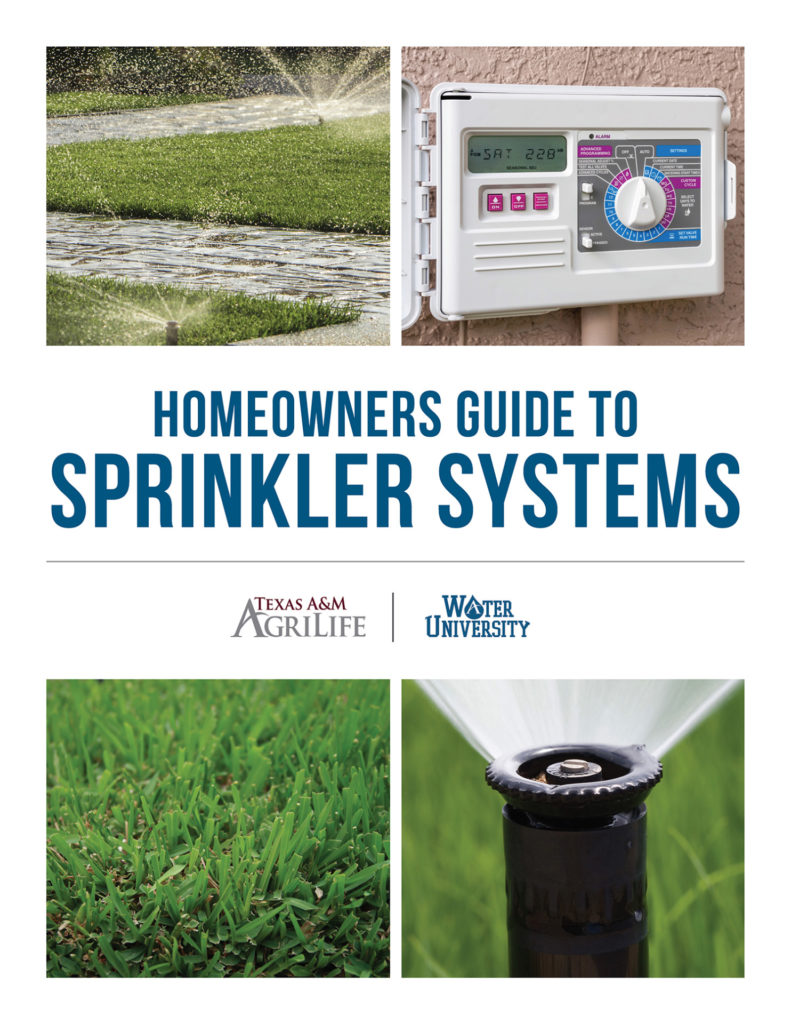Irrigation tips for lawns during summer
AgriLife experts: Lawns like less water than you might think
Even as summer temperatures rise, watering too frequently can be a home dweller’s biggest mistake when trying to cultivate the perfect lawn or landscape, Texas A&M AgriLife experts agree.
“In most cases you shouldn’t need to water more than once a week,” said Guy Fipps, Ph.D., professor and state irrigation specialist with the Texas A&M AgriLife Extension Service in College Station.
Applying water at an ideal rate is one step in a holistic approach to building healthier landscapes with less water and fewer other inputs. It includes methods like maintaining a longer grass-blade height, irrigating at the opportune time of day, using smart irrigation controllers and picking the right plants, among others.
Landscape irrigation tips
Fipps recommends Texans consider using the free Water My Yard app and website from AgriLife Extension to help determine how much to water each week. The app combines information about an individual’s lawn, irrigation system and precipitation rate. It uses the information to send weekly, customized, watering recommendations to Texans by text message, email or mobile device push notifications. Water My Yard is available to download from Google Play and the Apple Store.
“It’s key to remember that irrigation is only needed when rain is scarce,” said Daniel Cunningham, AgriLife Extension horticulturist with the Water University outreach program in Dallas. “If it’s just rained or rain is in the forecast, it’s probably best to let Mother Nature take care of the watering.”
The free Homeowner’s Guide to Sprinkler Systems from the Water University program provides broad information on efficient, effective irrigation systems. It includes system diagrams; considerations for building a new system; information on new automated technologies; tips for system efficiency; sprinkler system troubleshooting; and overall irrigation tips.
“The plants you pick for your landscape also matter a great deal in predetermining how efficient your irrigation can be,” Cunningham said.
He said plants grow best in their native – or similar – environments, and they typically can weather extreme conditions when planted in the right spot. Many non-natives and ill-adapted plants will require more water and other resources, and they generally will perform worse without extra care.
The AgriLife Extension Earth-Kind Plant Selector can help Texans choose the best plants for their respective regions. Cunningham also recommends another free guide, Water Efficient Landscaping: Go Green and Save Blue. It provides graphic recommendations for various best practices for a vibrant and efficient landscape.
How to save water for a better landscape now
In addition to accessing comprehensive, free online resources from Texas A&M AgriLife, Fipps and Cunningham recommend taking these immediate steps for better irrigation:
- Turn off irrigation systems during rain events.
- Use an inexpensive soil moisture meter to test the wetness of a planted area before watering.
- Water early in the mornings when wind speeds are normally low to avoid rapid midday and afternoon evaporation, as well as fungal problems from watering overnight.
- Check irrigation systems for leaks across the landscape and mark them for visibility when you return for repairs.
- Keep the lawn mowed as high as possible for the turfgrass variety planted to promote stronger, deeper roots and better water retention.
- Introduce regionally native or adapted plants into the landscape.
- Consider using automated irrigation devices like digital controller boxes and rain sensors.





